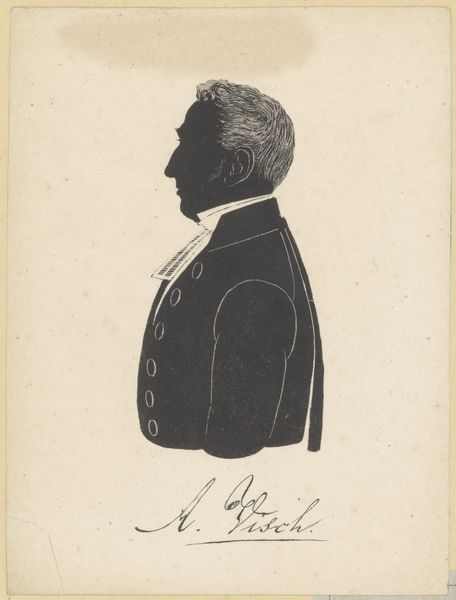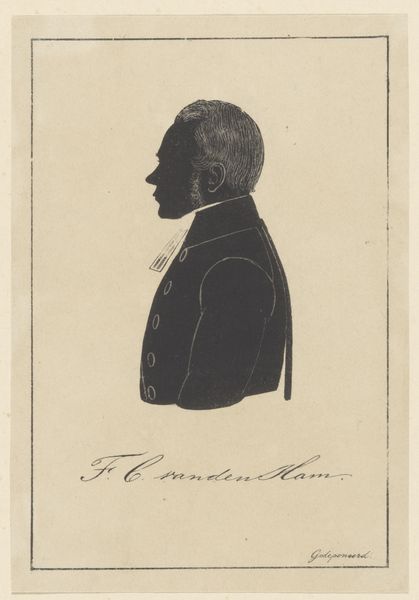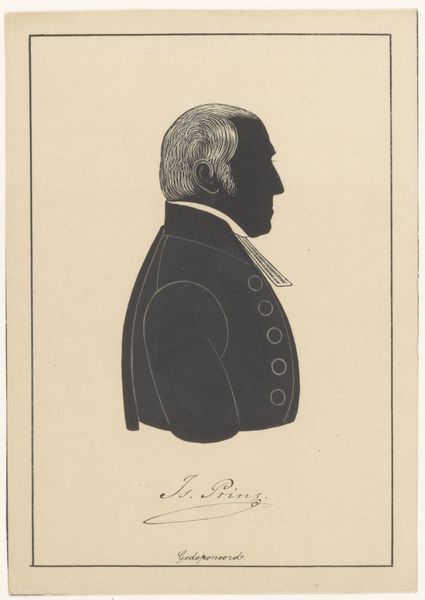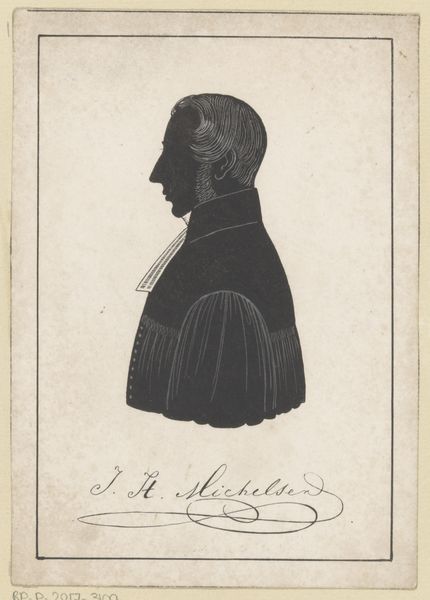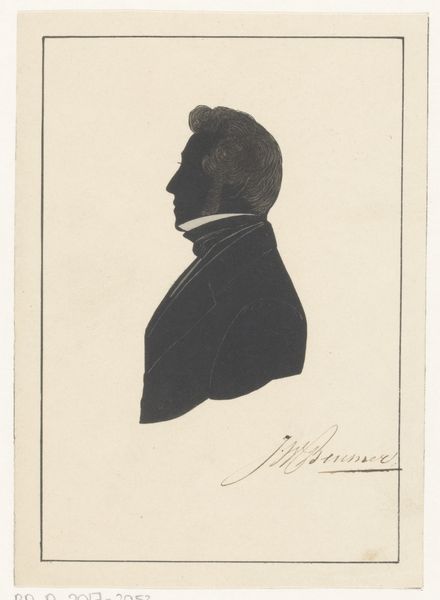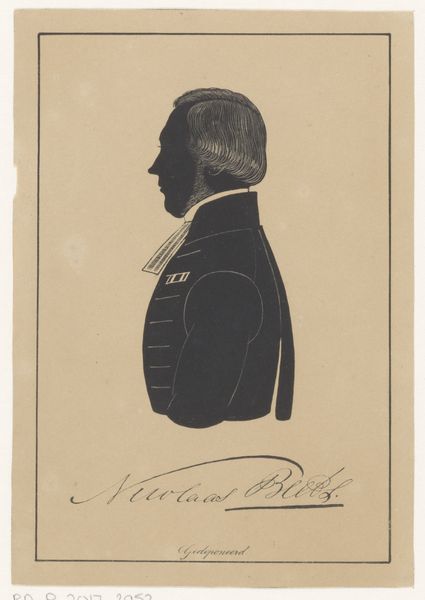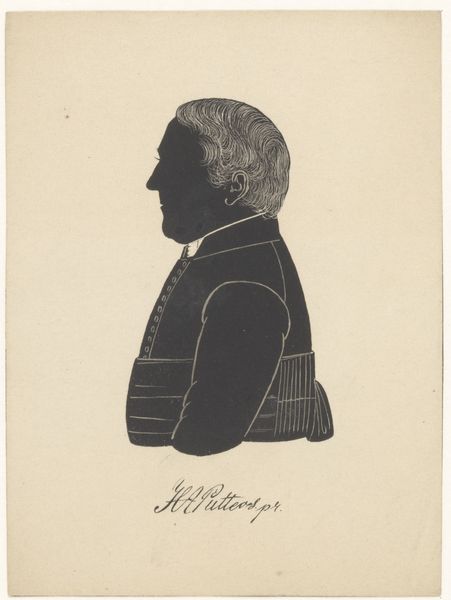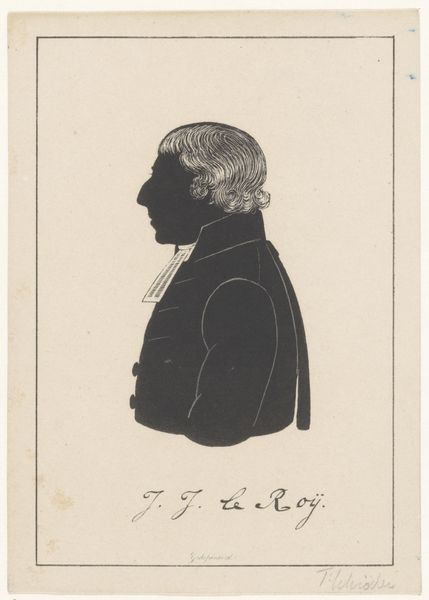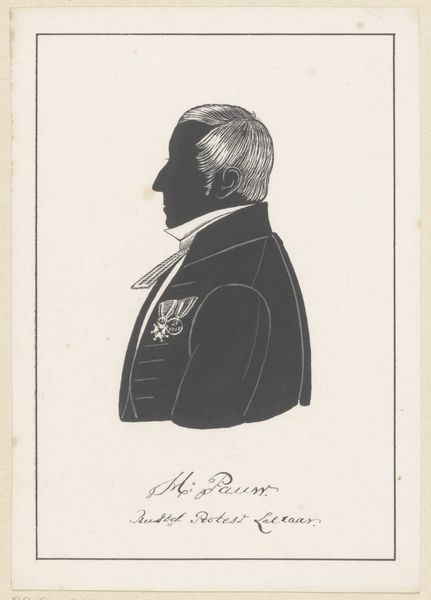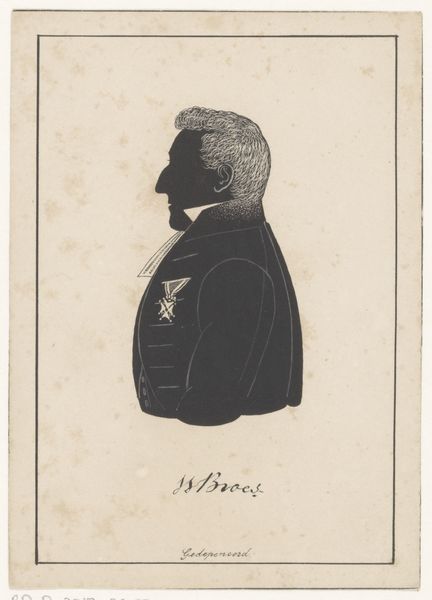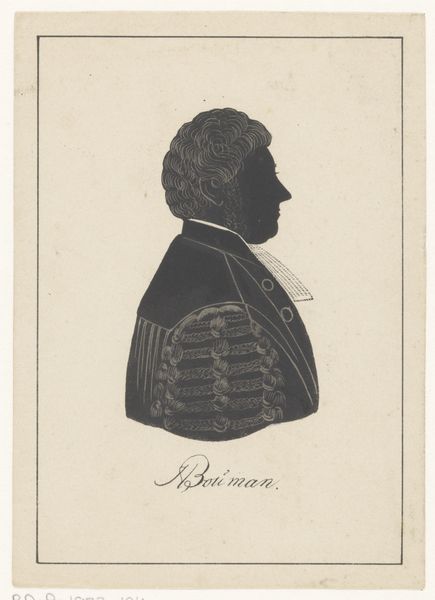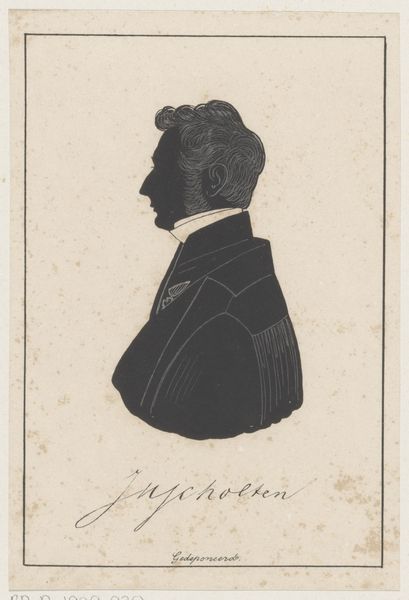
drawing, pencil
#
portrait
#
pencil drawn
#
drawing
#
pencil sketch
#
old engraving style
#
figuration
#
pencil drawing
#
pencil
#
line
Dimensions: height 153 mm, width 108 mm
Copyright: Rijks Museum: Open Domain
This silhouette portrait of Wessel Albertus van Hengel was made by Pieter Barbiers the fourth, though we do not know when. It is currently held in the Rijksmuseum. Silhouette portraits were a popular and affordable way to record a person's likeness in the Netherlands in the 18th and 19th centuries, before photography became widespread. They also served as a tool for social distinction: not everyone could afford to have their portrait made, even in silhouette. Van Hengel’s silhouette embodies cultural values that were placed on representation and remembrance. His likeness, cut from paper and mounted on card, is a testament to his place in society. The crisp lines and careful detailing convey not only his physical appearance but also his status, as suggested by his clothing and what appears to be an award pinned to his chest. To truly understand this image, we would need to delve deeper into the social and economic conditions of the time. Archival records, genealogical research, and studies of Dutch portraiture conventions would all help. By considering these factors, we can appreciate the silhouette as more than just a likeness.
Comments
No comments
Be the first to comment and join the conversation on the ultimate creative platform.

